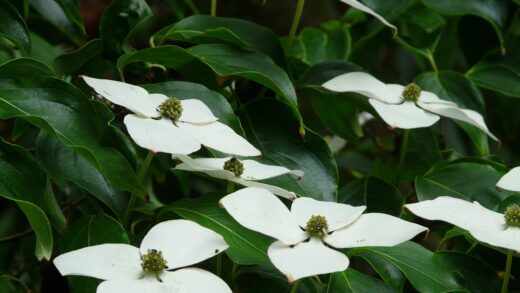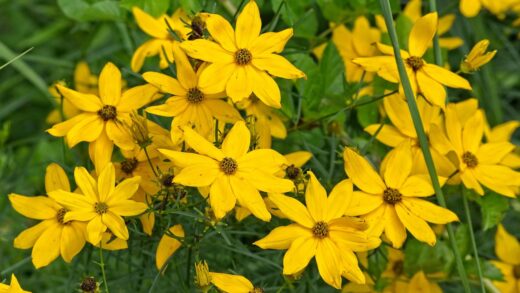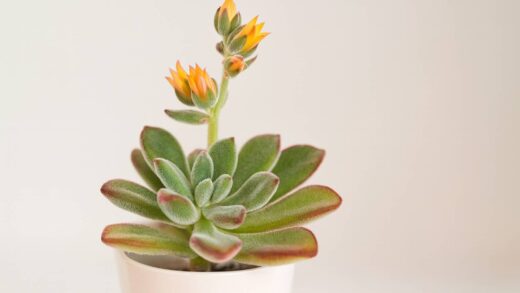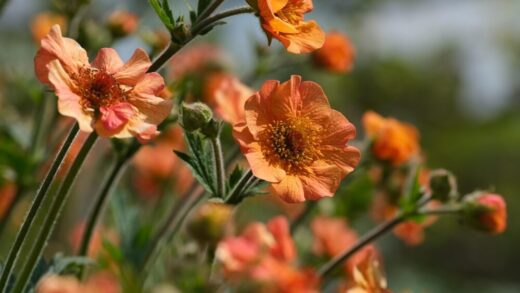Pruning is a vital horticultural practice that, when applied to bacopa, can transform a good-looking plant into a truly spectacular one. Although often described as “self-cleaning,” meaning it does not require the laborious deadheading of spent flowers, bacopa benefits immensely from strategic trimming and cutting back throughout the growing season. This maintenance encourages a denser, more compact growth habit, prevents the plant from becoming straggly or “leggy,” and stimulates the production of new stems and, consequently, more flowers. Far from being a mere chore, pruning is a powerful tool for shaping the plant and maximizing its floral display.
The primary reason for pruning bacopa is to manage its vigorous trailing growth. Left to its own devices, the plant’s stems will continuously lengthen, with the majority of new flowers appearing at the growing tips. Over time, this can result in long, bare stems with just a tuft of flowers at the very end, leaving the centre of the plant looking sparse and woody. Regular trimming encourages the plant to branch out from the nodes further back on the stems, filling in the centre and creating a much fuller, more lush appearance from the base of the plant to the tips of its trailers.
Beyond aesthetics, pruning also plays a crucial role in the plant’s overall health. By selectively removing some of the stems, you can improve air circulation through the dense canopy of foliage. This increased airflow helps the leaves to dry more quickly after watering or rain, significantly reducing the risk of fungal diseases like powdery mildew and botrytis, which thrive in stagnant, humid conditions. It also allows light to penetrate deeper into the plant, encouraging new growth from the crown.
This article will serve as a comprehensive guide to the art and science of pruning bacopa. We will cover the different types of pruning, from gentle pinching to a more drastic mid-season rejuvenation cut. It will detail the right tools for the job, the best times to perform these tasks, and the specific techniques that will lead to a healthier, more floriferous plant. Understanding and implementing these simple pruning strategies will ensure your bacopa remains a vibrant cascade of colour throughout the entire season.
The importance of regular trimming
Regular, light trimming is the key to maintaining the desirable dense and mounding habit of bacopa. This preventative approach is far more effective than waiting for the plant to become leggy and then attempting a drastic renovation. The goal of this type of pruning is to constantly encourage lateral branching. When you snip off the growing tip of a stem, you remove the apical bud, which produces hormones that suppress the growth of buds further down the stem. Once this apical dominance is removed, the lateral buds are stimulated to grow, resulting in multiple new side shoots.
More articles on this topic
This practice should begin early in the plant’s life, shortly after planting. Once the young bacopa has established itself and started to produce new growth, begin pinching or snipping the tips of the main stems. This initial pruning sets the stage for a well-branched structure from the very beginning. Throughout the season, make it a regular habit—perhaps every two to three weeks—to give the plant a light “haircut.” This doesn’t need to be a major undertaking; simply trim back a few of the longest stems by a few centimetres, focusing on any that seem to be outgrowing the others.
This consistent trimming ensures that the plant continually puts its energy into creating a full, bushy framework rather than just extending a few long, trailing stems. The result is a plant that is covered in flowers from the centre of the pot all the way to the ends of its cascades, rather than having blooms concentrated only at the tips. It also keeps the plant’s size in check, which can be important in mixed container plantings where you don’t want the vigorous bacopa to overwhelm its neighbours.
Think of regular trimming as a form of dialogue with the plant, guiding its growth to achieve the desired shape and form. It is a subtle but powerful technique that requires only a few minutes of attention every couple of weeks. This small investment of time pays huge dividends in the form of a healthier plant and a much more impressive and sustained floral display that lasts the entire season.
Tools and techniques for effective pruning
For the light, regular trimming that bacopa requires, the tools needed are simple. Your own fingertips are often sufficient for “pinching” back the soft, new growth at the tips of the stems. This is the gentlest method and is perfect for ongoing maintenance. For slightly woodier stems or for a more precise cut, a small, sharp pair of floral snips, bonsai shears, or even a clean pair of household scissors will work perfectly. The most important thing is that the cutting tool is sharp to make a clean cut and avoid crushing the stem tissue, which can invite disease.
More articles on this topic
The basic technique for encouraging bushiness is to locate a stem and follow it back from the tip to a set of leaves. Make your cut about a centimetre above this set of leaves. From the node where these leaves are attached to the stem, new shoots will emerge and grow. When performing a general trim, aim to cut back about 20-25% of the stems at varying lengths. This staggered approach helps to maintain a natural look, avoiding a sheared or overly manicured appearance, and ensures that not all the flowering tips are removed at once.
Always make sure your tools are clean before you start pruning, and it is a good practice to clean them between plants if you are working on several. This can be as simple as wiping the blades with a cloth soaked in rubbing alcohol. This prevents the potential transfer of diseases from one plant to another. While bacopa is not exceptionally prone to disease transmission this way, it is a fundamental principle of good garden hygiene that is worth practising.
After any pruning session, it is beneficial to give the plant a good watering and, if it is due, a dose of liquid fertilizer. This provides the plant with the resources it needs to recover from the stress of pruning and to quickly push out the new growth you are trying to encourage. The combination of pruning and feeding sends a strong signal to the plant to branch out and produce more flowers.
The mid-season rejuvenation prune
Despite regular trimming, there may come a point, typically in the heat of mid-summer, when your bacopa plant begins to look tired and sparse. Flowering may slow down, and the stems can start to look woody at the base. This is a common occurrence as the plant puts all its energy into flowering during the first half of the season. At this point, a more drastic rejuvenation prune can work wonders to refresh the plant for a spectacular autumn display.
This “hard prune” involves cutting back the entire plant significantly. Do not be timid; using clean shears, cut back all the stems by about one-half to two-thirds of their length. While the plant will look quite stark immediately after this procedure, it is often exactly what is needed to stimulate a new flush of vigorous growth from the base and centre of the plant. This is best done during a period when the most intense summer heat has started to subside, as the plant will recover more quickly in slightly milder temperatures.
Immediately following a hard prune, it is crucial to support the plant’s recovery. Water it thoroughly and provide it with a full-strength dose of a balanced, water-soluble fertilizer. The nutrients will fuel the development of new shoots and leaves. Place the plant in a location where it is protected from the harshest afternoon sun for a week or two as the tender new growth begins to emerge. This helps to reduce stress and prevent scorching.
Within a surprisingly short period, usually just two to three weeks, you will see your bacopa spring back to life. The plant will be more compact, much denser, and will soon be covered in a fresh wave of blooms that will often continue until the first frost. This mid-season reset is one of the most effective techniques for overcoming the common “summer slump” and ensuring your bacopa looks its best for the entire duration of the growing season.
Pruning for overwintering
If you plan to overwinter your bacopa indoors, pruning is not just beneficial, it is an essential part of the preparation process. The goal of this type of pruning is to reduce the overall size of the plant to make it more manageable indoors and to remove older, less productive growth. The lower light and humidity levels inside a home cannot support the large, lush plant that was thriving outdoors. A hard prune helps the plant conserve energy and resources through the winter months.
Before bringing the plant inside for the winter, and after a thorough pest inspection, you should cut the plant back severely. Using clean, sharp shears, trim all the stems back so that they are only 10-15 centimetres long. This may seem extreme, but it is necessary. It removes the majority of the foliage that would likely die and drop anyway in the indoor environment, creating a mess and potentially harbouring disease. This leaves a compact framework of healthy stems that will go into a semi-dormant state.
This pre-winter prune also reduces the amount of water the plant will need over the winter, making it easier to avoid the common problem of overwatering and root rot. With less foliage, the plant’s transpiration rate is significantly lower. This helps the plant to survive in a state of suspended animation until the days begin to lengthen again in the spring.
When spring arrives and you begin to see signs of new life, another light pruning may be in order. Before you start the process of hardening the plant off to return outdoors, you can trim away any stems that may have died back over the winter and lightly shape the new growth. This spring touch-up will encourage the plant to branch out as it comes out of dormancy, setting it up for a season of healthy, bushy growth once it is back in its summer home.
📷: Deavmi, CC BY-SA 3.0, via Wikimedia Commons


















